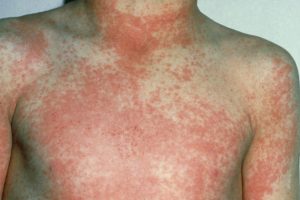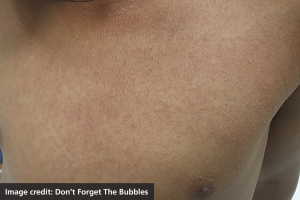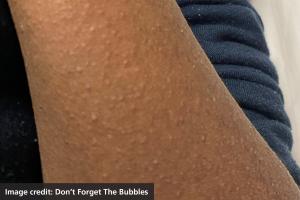Strep A – how worried should I be?
An increase in the number of cases of scarlet fever in children have been reported in the last few weeks. Scarlet fever is caused by a group of bacteria known as Group A Streptococcus (GAS), or Strep A.
Scarlet fever is caused by a group of bacteria known as Group A Streptococcus (GAS), or Strep A. An increased number of cases of scarlet fever in children have been reported in the last few weeks. A small number of children have died in the UK as a result of serious invasive Strep A infection. However, this is rare and most children are not seriously ill with Strep A infection.
Strep A bacteria mostly cause common respiratory infections such as tonsillitis and sore throat and skin conditions such as impetigo and cellulitis. These conditions are rarely serious and can be treated with antibiotics if needed. Step A bacteria also cause scarlet fever (more information on this below). If Strep A gets into the bloodstream, for example through a wound or sore, it may occasionally cause a serious infection. A small number of children have died in the UK this year as a result of invasive Group A Strep (iGAS) infection. Children may be at risk of this more serious infection after a viral illness or if they have a compromised immune system. Children who have had chickenpox in the last 2 years may also be at increased risk.
While the increased rate of scarlet fever may be alarming for parents, it is important to remember that most children get only mild illness with Strep A infection, and infections are usually treated successfully with antibiotics. However, it is useful to know about the symptoms of more serious illness. Contact your doctor if you are concerned.
What are the symptoms?
The first symptoms of scarlet fever are similar to those of flu: high temperature (fever) that does not come down with paracetamol, painful sore throat and swollen glands (lumps) in the side of the neck. A rash appears after 12–48 hours, usually on the chest and tummy, and then spreads. The rash looks like small bumps and feels dry and rough, like sandpaper. The rash can look different on different skin tones, as shown below. A white coating may form on the tongue, which peels away after a few days leaving the tongue red and swollen (this is known as strawberry tongue). You can read more about the symptoms and see pictures of the rash on the NHS website here.
 |
 |
 |
What can you do to protect your child?
Strep A is passed on through close physical contact. You can help to protect your child by simple hygiene measures. Make sure they wash their hands regularly with warm water and soap, especially before eating and after contact with other children . They should catch coughs and sneezes with a tissue, which should then be thrown away. If your child is unwell, particularly if they have a raised temperature, they should stay away from other people.
You should speak to a health professional if your child shows signs of getting worse after a bout of scarlet fever, a sore throat or a respiratory infection.
The Royal College of Paediatrics and Child Health (RCPCH) have issued advice for parents regarding Strep A infection, which includes clear advice of when your child needs medical attention: RCPCH advice
You can read further advice for parents on the NHS website here.
Why are rates high this year?
High rates of Strep A infection were last recorded in 2018 and we do not yet know why the incidence of Strep A infection has increased this year. It may be because levels of the bacteria are higher than normal, or because we have returned to normal social mixing after 2 years of Covid restrictions, which also protected against other infections. It is not believed to be caused by a new strain of the bacteria although a more toxic strain of the bacteria has been around for a few years and may be responsible for the higher rates.
There is more information available regarding Strep A from the UK Health Security Agency here.
